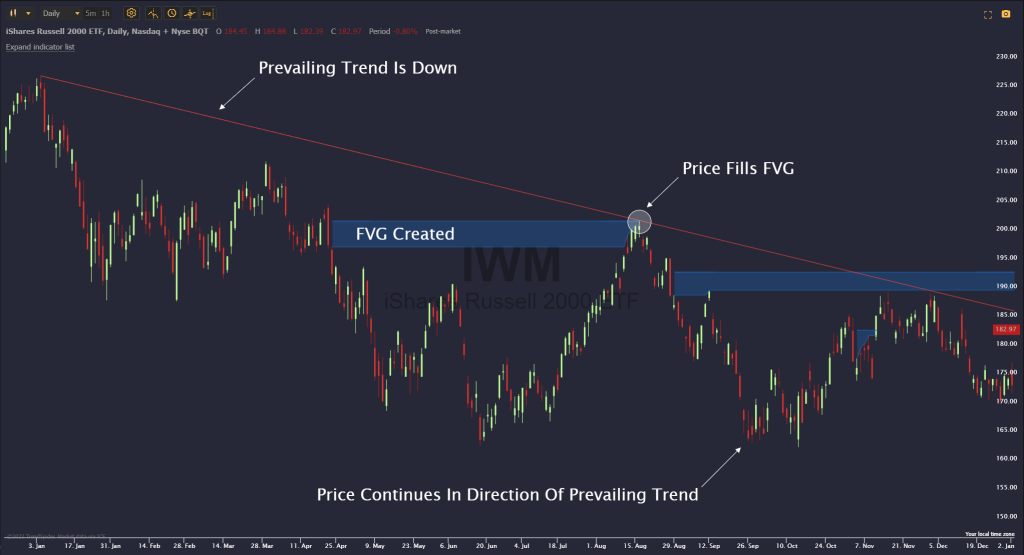Understanding the fair value gap (FVG) is essential for any trader looking to make informed decisions in the financial market. In this guide, we will delve into the definition, trading strategies, and significance of the fair value gap to help you navigate this critical aspect of trading.
What is Fair Value Gap?
The fair value gap is a concept familiar to price action traders, indicating imbalances or inefficiencies in the market. It occurs when there is a disparity between buying and selling pressure, leading to price jumps and potential trading opportunities.
Identifying Fair Value Gap
To recognize a fair value gap, traders look for a set of three candles characterized by heavy buying or selling in the same direction. This movement creates a gap between the wicks of the first and last candle, marking the formation of the fair value gap.

Credit: trendspider.com
Trading Strategies for Fair Value Gap
Once identified, traders can utilize fair value gap for executing trades. Here are a few essential criteria to consider when using fair value gaps for trading:
| 1 | Psychology Behind Market Movement |
| 2 | Fair Value Gap (FVG) Identification Theory |
| 3 | Visualizing FVG for Effective Analysis |
| 4 | Creating FVG Scanner for Trade Opportunities |
Timeframe and Fair Value Gap
Choosing the right timeframe is crucial when utilizing fair value gaps for trading. Each timeframe presents unique opportunities and challenges, making it important to align your trading strategy with the selected timeframe.
Pros And Cons Of Fair Value Gap
Before incorporating fair value gap into your trading strategy, it’s essential to weigh the pros and cons:
- Pros:
- Provides insights into market imbalances
- Offers potential trading opportunities
- Can be used in conjunction with other indicators
- Cons:
- Requires in-depth understanding and analysis
- May result in false signals if misinterpreted
- Not suitable for all market conditions

Credit: ghosttraders.co.za
Frequently Asked Questions On Fair Value Gap Explained: Maximizing Trading Opportunities
What Does Fair Value Gap Indicate?
A fair value gap indicates market inefficiencies or imbalances, attracting price movements before continuing in the same direction.
What Are The Rules For Fvg?
The rules for FVG (Fair Value Gap) are as follows: 1. Identify a set of three candles with heavy buying or selling in the same direction. 2. Look for a large move in either direction to form a gap between the first candle’s wick and the last candle’s wick.
3. Avoid starting sentences with certain words and phrases such as “When it comes to,” “If you,” “Looking,” and so on. 4. Write in active voice, avoiding passive voice. 5. Ensure that the content is SEO-friendly, unique, easy to understand, and free of plagiarism.
What Is The Difference Between Imbalance And Fvg?
The difference between imbalance and FVG is that imbalance refers to a situation in the market where there are discrepancies or inequalities between the buying and selling activity. On the other hand, FVG (Fair Value Gap) is a term used to describe inefficiencies or imbalances in the market that can act as a magnet for prices before continuing in the same direction.
FVG is especially popular among price action traders.
Which Time Frame Is Best For Fair Value Gap?
The best time frame for fair value gap is determined by the trader’s strategy and timeframe preference.
Conclusion
The fair value gap is a valuable tool for traders, offering insights into market imbalances and potential trading opportunities. By understanding its definition, identification, and trading strategies, you can effectively integrate fair value gap into your trading approach and make informed decisions in the market.

